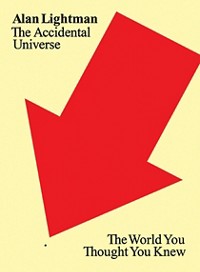Advertisement
Grab your lab coat. Let's get started
Welcome!
Welcome!
Create an account below to get 6 C&EN articles per month, receive newsletters and more - all free.
It seems this is your first time logging in online. Please enter the following information to continue.
As an ACS member you automatically get access to this site. All we need is few more details to create your reading experience.
Not you? Sign in with a different account.
Not you? Sign in with a different account.
ERROR 1
ERROR 1
ERROR 2
ERROR 2
ERROR 2
ERROR 2
ERROR 2
Password and Confirm password must match.
If you have an ACS member number, please enter it here so we can link this account to your membership. (optional)
ERROR 2
ACS values your privacy. By submitting your information, you are gaining access to C&EN and subscribing to our weekly newsletter. We use the information you provide to make your reading experience better, and we will never sell your data to third party members.
Biological Chemistry
Transcendent Life?
by Rudy M. Baum
December 12, 2011
| A version of this story appeared in
Volume 89, Issue 50
A reader recently wrote to ask whether she could purchase an article—specifically the cover story in the Aug. 21, 1967, issue—from the C&EN Archives. The answer, of course, is that she could, for $10.*
C&EN Deputy Editor-in-Chief Maureen Rouhi got the e-mail, and she brought the article to my attention. Its title is “Life Transcending Physics and Chemistry,” and it is a 13-page, lavishly illustrated (for C&EN) philosophical essay by Michael Polanyi, one of the seminal scientist-philosophers of the 20th century. It is not the kind of essay I associate with C&EN.
I spent most of that evening reading and rereading Polanyi’s essay and thinking about it. He makes two central points early in the essay, the first concerning DNA. “A DNA molecule essentially transmits information to a developing cell,” he writes. “Similarly a book transmits information. But the transmission of the information cannot be represented in terms of chemical and physical principles. In other words, the operation of the book is not reducible to chemical terms. Since DNA operates by transmission of (genetic) information, its function cannot be described by chemical laws either.”
He also writes, “I differ … from most biologists, by holding that no mechanism—be it a machine or a machinelike feature of an organism—can be represented in terms of physics and chemistry. This principle precludes the possibility of biology ever becoming a molecular science.”
I think it is clear that advances over the past 40-plus years show that Polanyi was wrong—biology has become a molecular science. What fascinates me is trying to understand why he was wrong, because he was a very sophisticated thinker.
In an argument that is far too complex to reprise here, Polanyi makes a strong case that the origin of any particular genetic sequence, and, by extension, the origin of life itself, cannot be explained on the basis of chemical and physical principles alone. However, when he uses the analogy between DNA and a book to state that transmission of genetic information “is nonchemical and nonphysical,” he is mistaken. Genetic information is encoded in DNA’s structure, and although we might not be able to determine the provenance of that information through chemical and physical principles, transcription itself is a profoundly chemical process that we now understand in quite some detail.
Likewise, when Polanyi compares biological structures to machines and insists that both are irreducible to chemical and physical principles, he is arguing at the level of cells and organs. With the structure of a molecular machine like the ribosome in hand, its form and function are, in fact, wholly described by chemical and physical principles.
Polanyi writes: “The machine is a machine by having been built and being then controlled according to principles of engineering. The laws of physics and chemistry are indifferent to these principles; they would go on working in the fragments of the machine if it were smashed.” He continues: “Returning now to living beings, we may start by observing that to speak of life as something to be explained by the laws of physics and chemistry is strictly speaking absurd, for physical and chemical processes do not determine by themselves any finite system.” In the realm of molecular machines operating within the well-defined confines of living systems, this assertion simply isn’t true. If a ribosome were figuratively smashed, some aspects of its chemistry would cease to function; as a machine, its “engineering principles” are indistinguishable from its chemistry.
If this seems somewhat esoteric, Polanyi’s arguments, or ones very similar to them, continue to resonate with some nonscientists who object to aspects of the scientific endeavor to fully understand life (C&EN, June 4, 2001, page 56).
I’ll return to another interesting aspect of this 1967 issue of C&EN in next week’s editorial.
Thanks for reading.
*Starting in January 2012, ACS members can download 25 journal papers, book chapters, and C&EN Archives stories for free each year.




Join the conversation
Contact the reporter
Submit a Letter to the Editor for publication
Engage with us on Twitter